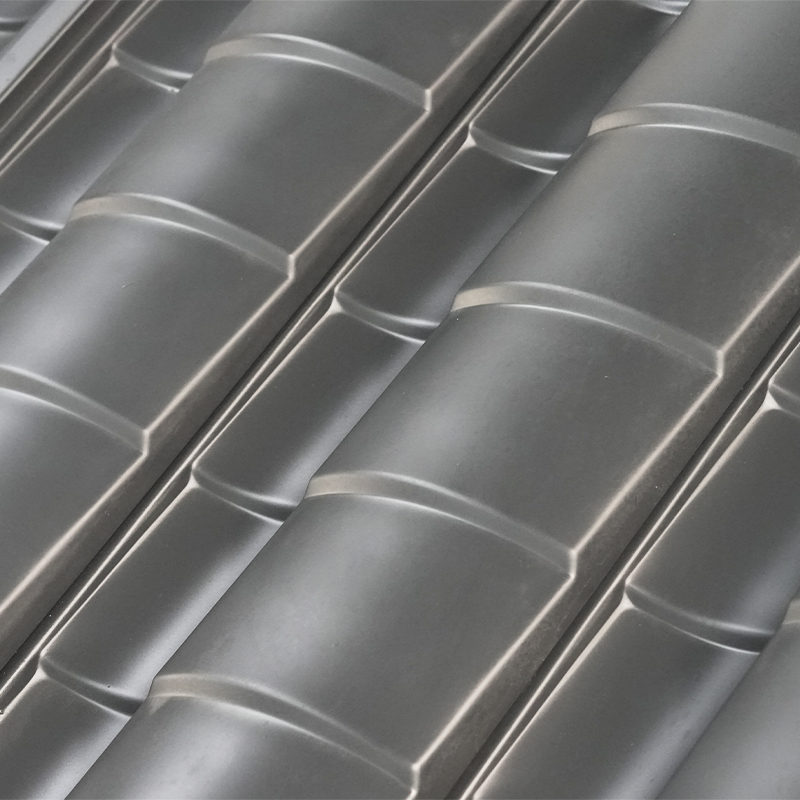Content
Introduction to Coatings on Roof Metal Flat Tiles
Roof metal flat tiles are exposed to various environmental stresses, including rain, sunlight, wind, and temperature fluctuations. To enhance their longevity and protect the metal substrate, high-quality coatings are applied. These coatings serve as a barrier against corrosion, mechanical damage, and chemical reactions, ensuring that the tiles maintain both structural integrity and aesthetic appeal over time.
Types of Coatings and Their Protective Functions
Polyester (PE) Coatings
Polyester coatings are widely used for roof metal flat tiles due to their flexibility and UV resistance. They provide a smooth, colored surface that prevents direct contact between the metal and environmental elements, minimizing oxidation and rust formation. PE coatings also retain color and gloss for extended periods, enhancing the visual longevity of roofing.
Polyvinylidene Fluoride (PVDF) Coatings
PVDF coatings offer superior protection against UV radiation, chemical pollutants, and extreme weather. Their multi-layer structure typically includes a primer, a color coat, and a clear protective topcoat. This combination not only prevents corrosion but also reduces chalking, fading, and surface degradation, making PVDF-coated tiles ideal for regions with harsh climatic conditions.
Zinc and Aluminum-Based Coatings
Before applying organic coatings, metal tiles often receive a zinc or aluminum-based protective layer through galvanization or aluminization. These metallic coatings provide sacrificial protection: the zinc or aluminum corrodes preferentially to the underlying steel, preventing rust formation. This is especially important for coastal areas where salt spray accelerates corrosion.
How Coatings Enhance Durability
Coatings increase durability by acting as a protective shield against mechanical and environmental stresses. They reduce surface scratches, prevent the penetration of moisture, and inhibit chemical reactions that can weaken the metal. A well-applied coating system ensures that the tiles maintain their shape, color, and protective properties even under heavy rainfall, snow loads, or high winds.

Impact on Corrosion Resistance
Corrosion is one of the primary threats to metal roofing. Coatings form a physical barrier that blocks oxygen, water, and pollutants from reaching the metal surface. Additionally, certain coatings are chemically formulated to neutralize acidic or alkaline agents in rainwater and atmospheric pollutants. Combined with metallic undercoats like zinc, these coatings can significantly extend the lifespan of metal flat tiles, sometimes by decades compared to uncoated metal.
Comparison of Coating Properties
| Coating Type | Durability | Corrosion Resistance | UV & Weather Resistance |
| PE Coating | Moderate | Moderate | Good |
| PVDF Coating | High | High | Excellent |
| Zinc/Aluminum Layer | High | Very High | Moderate |
Practical Benefits for Roofing Applications
- Prolonged lifespan of roof metal flat tiles, reducing replacement frequency.
- Enhanced resistance to rust, corrosion, and environmental degradation.
- Maintains visual appearance and color retention for aesthetic appeal.
- Improves structural integrity, reducing maintenance costs and labor.
- Suitable for harsh weather conditions, including coastal and industrial areas.
Conclusion: Coating as a Key to Longevity
The coating on roof metal flat tiles is a critical factor in enhancing both durability and corrosion resistance. By combining metallic undercoats with advanced organic coatings like PE or PVDF, manufacturers create tiles that withstand environmental stress, retain their appearance, and provide long-term protection. Selecting high-quality coated metal tiles ensures a reliable, low-maintenance roofing solution suitable for a wide range of climates and building designs.




 English
English русский
русский Español
Español عربى
عربى















